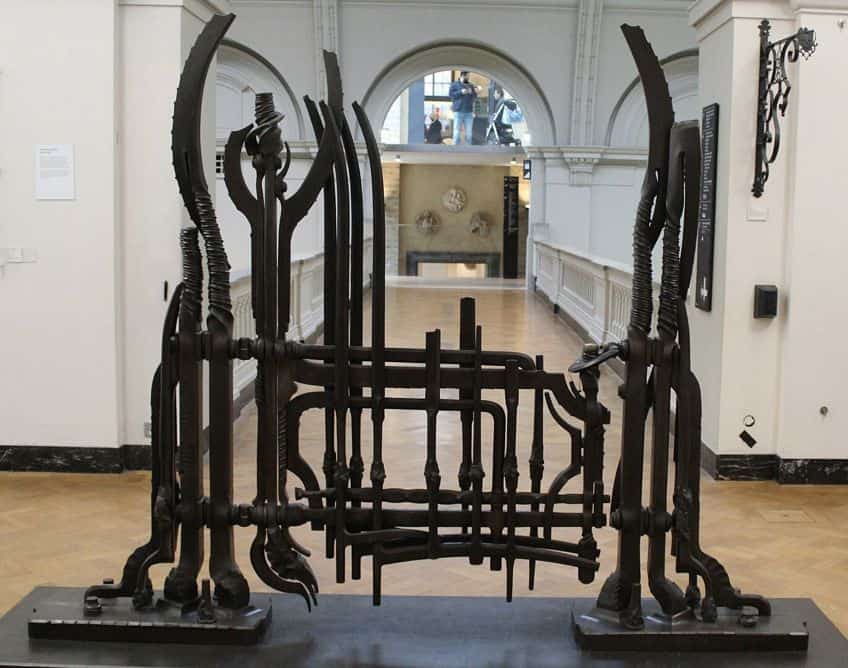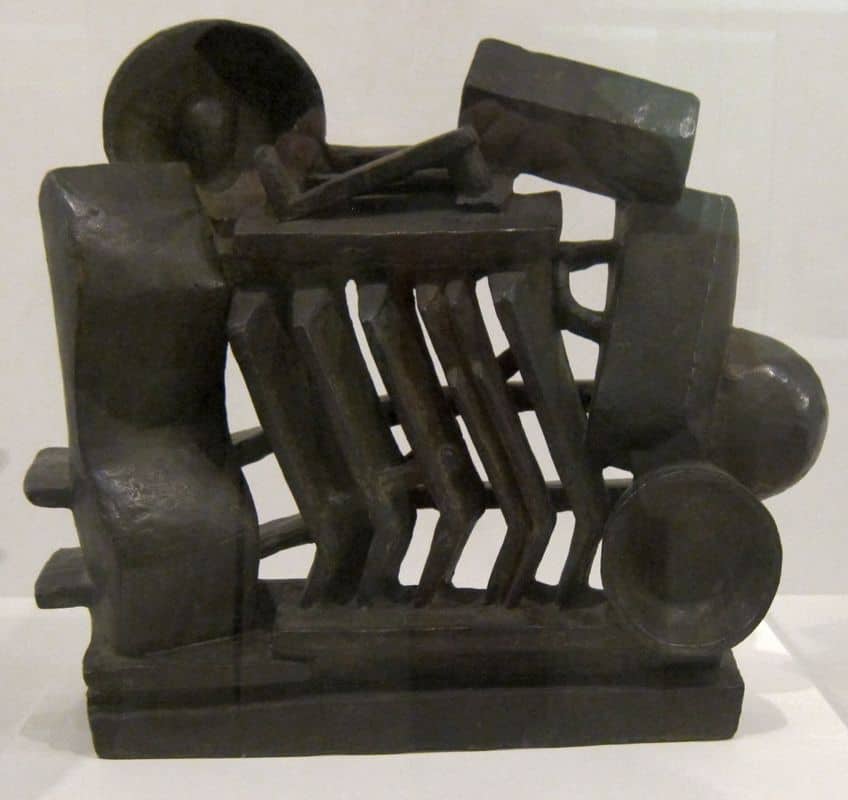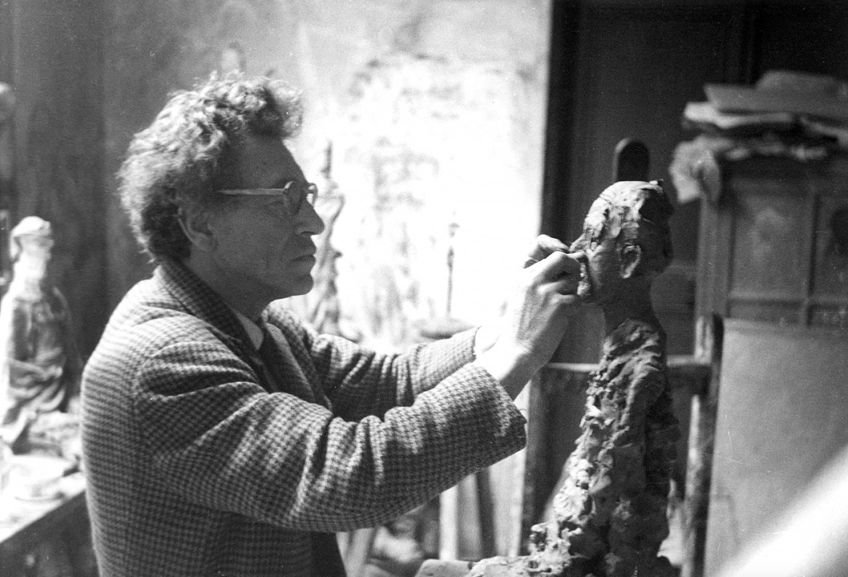Metal Sculpture Artists – The Masters of Form and Texture
Metal sculpture artists have long captured the imagination with their mastery of form, texture, and the sheer physicality of their medium. From monumental outdoor installations to intricate tabletop creations, these artists have pushed the boundaries of what metal can express. Exploring themes ranging from the natural world to the abstract realms of human emotion, famous metal sculpture artists have left an indelible mark on the art world, blending craftsmanship with conceptual depth in works that resonate with viewers worldwide. In this article, we delve into the lives and creations of some of the most renowned metal sculpture artists, showcasing their unique contributions to the world of contemporary sculpture.
Table of Contents
Key Takeaways
- Metal sculpture is a diverse art form that has evolved significantly over time.
- Notable artists have pioneered various techniques and styles in the realm of metal art.
- Metal sculpture continues to grow, integrating new materials and innovative methods.
Evolution and History
Metal sculpture as an art form stands as a testament to human creativity and the versatile nature of metal as a medium. Artists across centuries have been shaping, welding, and molding metal into sculptures that capture the imagination and stand the test of time. These sculptors harness the properties of various metals to create both abstract and representational forms, often on a grand scale that dominates public spaces or on an intimate scale that engages viewers on a personal level.

The evolution of metal sculpture is illuminated by the contributions of famous artists whose works have become landmarks in the history of art. From the welded iron and steel sculptures of David Smith to the grandeur of Albert Paley’s abstract metalwork, these artists have expanded the boundaries of what can be achieved with metal. Their legacies not only reflect their times but also continue to influence contemporary sculpture, paving the way for future artists who seek to explore the expressive potential of metal. Metal sculpture has a rich lineage that extends from early history to the innovative techniques of today.
This section explores the progression from ancient techniques to contemporary forms, touching upon key figures and milestones in the evolution of metal sculpture.
Origins and Progression
The art of metal sculpture dates back to prehistoric times, evidenced by metal artifacts unearthed by archaeologists. Early civilizations learned to hammer and cast metals, fundamental techniques that would endure over centuries. The Industrial Revolution provided a significant pivot in the evolution, expanding artists’ access to diverse metals and advanced tools. This era introduced an industrial aesthetic into art as well.
- Bronze Age: Emergence of bronze work reflecting early metallurgy.
- Iron Age: Advancements in ironwork, broadening the possibility for creations.
- Industrial Revolution: Access to new forms of metals and mechanized processes.

Prominent figures began to emerge in the 20th century. Artists like David Smith and his contemporary, Anthony Caro, revolutionized the medium. Smith is renowned for his abstract and monumental steel sculptures, while Caro’s work reflects a departure from conventional plinth-based sculptures. Louise Bourgeois’ contributions were both formidable and unique, with her large-scale pieces often exploring themes of emotion and the human experience.
Contemporary Metal Sculpture
Today, technology is at the forefront of metal sculpture evolution, opening doors to unprecedented levels of precision and creative potential. Artists utilize digital design and 3D printing, propelling the medium into new realms of expression.
- Technological integration: Digital tools and 3D printing reinvent traditional processes.
- Innovative materials: Exploration of metals continues, including the use of recycled and sustainable materials.
- Artistic expression: Today’s sculptors push the boundaries of form and scale.
Contemporary sculptors leverage these advancements, ensuring that metal sculpture remains a dynamic and evolving art form.
Each piece reflects different aspects of history and innovation, embodying the ongoing dialogue between artist, material, and technique.
Materials and Techniques
The creation of metal sculptures is exemplified by the utilization of diverse metals and advanced techniques that artists adopt to bring their visions to life.

Traditional Metals
Bronze remains a prominent choice, revered for its strength and endurability, often used in a variety of artistic sculptures. Iron’s malleability makes it suitable for forging into intricate designs, whereas copper is favored for its color and texture.
Lead and tin occasionally see use but require careful handling due to toxicity and lower melting points.
Modern and Recycled Materials
Artists are expanding their material arsenal by incorporating aluminum and steel, favored for their light weight and resistance to corrosion, respectively. Scrap metal, whether derived from automobile parts or industrial offcuts, reflects an eco-conscious choice that pushes the boundaries of texture and form.

Sculpting Processes
Carving and welding are the main processes in metal sculpting. Artists employ a variety of tools to carve metals with precision, while welding allows for the assemblage of disparate pieces through heat application.
Techniques such as casting and forging impart durability and detail to the sculptures, facilitated by the metals’ inherent malleability and strength.
Notable Metal Sculpture Artists
Throughout history, metal sculpture artists have marked their presence with stunning creations, from intricate abstract metal sculptures to grand public installations. Their unique styles and approaches reflect individual creativity, setting the standard for talented artists to follow.

Alexander Calder (1898 – 1976)
| Birth | 1898 |
| Death | 1976 |
| Place of Birth | Lawnton, Pennsylvania, United States |
| Genre of Work | Sculpture, Mobile art, and Kinetic art |
Alexander Calder was a pioneering American sculptor known for his innovative mobiles and monumental outdoor sculptures. He began his career studying mechanical engineering before shifting to art, where he initially worked with wire sculptures. Calder’s breakthrough came with his invention of the mobile, a type of kinetic sculpture that uses motion to create ever-changing compositions. His artworks often feature bold colors and abstract forms, reflecting his interest in movement and balance.
Notable works include Lobster Trap and Fish Tail (1939) and Flamingo (1974), a large-scale stabile located in Chicago’s Federal Plaza.

Alberto Giacometti (1901 – 1966)
| Birth | 1901 |
| Death | 1966 |
| Place of Birth | Borgonovo, Switzerland |
| Genre of Work | Sculpture, painting, and drawing |
Alberto Giacometti was a Swiss sculptor and painter renowned for his distinctive elongated figures that convey a sense of existential angst and human vulnerability. His early works were influenced by Cubism and Surrealism, but he later developed his unique style characterized by thin, elongated figures with textured surfaces. Giacometti’s sculptures often explore themes of isolation, fragility, and the human condition.
Notable artworks include Walking Man I (1960) and The Chariot (1950), both of which exemplify his mastery of capturing human emotion and movement in bronze sculptures.

David Smith (1906 – 1965)
| Birth | 1906 |
| Death | 1965 |
| Place of Birth | Decatur, Indiana, United States |
| Genre of Work | Sculpture and painting |
David Smith was an influential American sculptor known for his abstract metal sculptures that revolutionized the field of sculpture in the mid-20th century. He initially trained as a painter but transitioned to sculpture, experimenting with welded metal constructions that defied traditional sculptural conventions. Smith’s artworks often feature geometric forms and industrial materials, reflecting his interest in the relationship between space, form, and texture.
Notable works include Cubi series (1961 – 1965) and Hudson River Landscape (1951), showcasing his innovative approach to three-dimensional art.

Louise Bourgeois (1911 – 2010)
| Birth | 1911 |
| Death | 2010 |
| Place of Birth | Paris, France |
| Genre of Work | Sculpture, installation, and painting |
Louise Bourgeois was a French-American artist known for her psychologically charged sculptures and installations exploring themes of feminism, sexuality, and the human psyche. Her career spanned several decades, during which she created a vast body of work encompassing sculptures, drawings, and prints. Bourgeois’ artworks often incorporate organic forms, biomorphic shapes, and symbolic motifs like spiders and cells.
Notable works include Maman (1999), a giant spider sculpture, and Cell XXVI (2003), an immersive installation reflecting her introspective and emotionally charged artistic vision.

Albert Paley (Born 1944)
| Birth | 1944 |
| Death | Present |
| Place of Birth | Philadelphia, Pennsylvania, United States |
| Genre of Work | Metal sculpture, public art, and design |
Albert Paley is an American metal sculptor and artist known for his large-scale public artworks and intricate metalwork designs. His career began in the 1960s, and he gained recognition for his innovative approach to forging metal into sculptural forms. Paley’s artworks often blend elements of abstraction with organic shapes, creating dynamic compositions that engage viewers.
Notable works include the Sentinel gates at the Renwick Gallery in Washington, D.C., and the Threshold sculpture at the St. Louis Art Museum, showcasing his mastery of metal craftsmanship and architectural scale.

Anish Kapoor (Born 1954)
| Birth | 1954 |
| Death | Present |
| Place of Birth | Mumbai, India |
| Genre of Work | Sculpture and installation |
Anish Kapoor is a British-Indian sculptor known for his monumental, immersive sculptures that explore concepts of space, color, and perception. Kapoor’s career took off in the 1980s when he gained international acclaim for his use of materials like stainless steel, wax, and pigment to create enigmatic forms. His artworks often play with light and shadow, inviting viewers to experience a sense of wonder and introspection.
Notable works include Cloud Gate (2006) in Chicago’s Millennium Park and Sky Mirror series, demonstrating his ability to transform public spaces with his monumental sculptures.

Rob Lorenson (Born 1969)
| Birth | 1969 |
| Death | Present |
| Place of Birth | United States |
| Genre of Work | Sculpture and installation |
Rob Lorenson is an American sculptor specializing in contemporary metal sculptures that merge abstract forms with geometric precision. His career began in the 1990s, and he has since created a diverse body of work ranging from small tabletop sculptures to large outdoor installations. Lorenson’s artworks often explore themes of balance, movement, and spatial relationships, using materials like stainless steel and aluminum to create sleek, minimalist compositions.
Notable works include Siren’s Song (2009) and Axis Mundi (2016), showcasing his technical skill and artistic vision in metal sculpture.

Chris DeRubeis (Born 1978)
| Birth | 1978 |
| Death | Present |
| Place of Birth | United States |
| Genre of Work | Metal art and abstract painting |
Chris DeRubeis is an American artist known for his innovative approach to metal art, particularly his use of chemical reactions to create vibrant and dynamic abstract paintings on metal surfaces. His career began in the early 2000s, and he quickly gained recognition for his unique technique of manipulating metal with chemicals and abrasives to produce intricate patterns and textures. DeRubeis’ artworks often feature bold colors, fluid forms, and a sense of movement, capturing the viewer’s attention with their luminous and reflective surfaces.
Notable works include Eclipse series and Aurora series, showcasing his mastery of metal as a medium for expressive artistry.

Contemporary Talents
- Anthony Caro (1924 – 2013): Caro brought a new perspective to metal sculpture with his abstract, colorful works that often rest directly on the ground, engaging viewers in a more personal space.
- Richard Serra (1938 – 2024): Today, Richard Serra is revered for his mammoth curvilinear sculptures, which seamlessly blend into their surrounding landscapes.
Each metal sculpture artist brings a unique style and approach to their craft:
- Creativity: Metal sculptors employ immense creativity to transform cold, rigid materials into dynamic works of art that often challenge our perception of metal.
- Unique style: From Smith’s method of welding to Giacometti’s and Caro’s abstract forms, each artist’s distinct style contributes to the rich tapestry of metal artistry.
- Approach: Whether it’s forging, welding, or casting, the approach taken by metal sculptors is integral to realizing their vision, as seen in the range from Bourgeois’ introspective pieces to Serra’s sprawling installations.
The Present and Future of Metal Sculpture
The landscape of metal sculpture is continuously evolving with a clear inclination towards sustainability and innovative techniques. Artists and fabricators remain committed to propelling the medium into new realms with public installations and private collections.

Public and Residential Displays
Public art installations have always been crucial for metal sculptures, as they elevate communal spaces and become part of the social fabric. Cities often commission outdoor sculptures that are not only visually striking but also reflect community identity and history. For instance, in residential areas, custom metal sculptures are becoming markers of personal taste and design sensibilities.
They merge the boundary between fine art showcased in galleries and the everyday lived experience.
- Public: Displayed in parks and urban spaces, often telling a cultural or historical narrative.
- Residential: Custom pieces for homeowners, reflecting personal style and adding a unique dimension to home decor.
Innovative Trends and Materials
Today’s metalworking is a blend of traditional craftsmanship and cutting-edge technology. Artists are employing sustainable materials and practices to reduce the environmental impact of their work. Furthermore, innovation in metal sculptures is evident through the use of unconventional materials and techniques, resulting in novel textures and forms.
- Materials: Recycled metals, eco-friendly coatings, and composites for sustainability.
- Techniques: 3D printing, interactive installations with sensory components, and kinetic sculptures embracing movement.
Metal sculpture artists are invested in pushing the boundaries of what can be achieved with metal, ensuring the art form’s innovation and relevance for future generations.

The world of metal sculpture art stands as a testament to human creativity, innovation, and the endless possibilities of artistic expression. Through the works of famous metal sculpture artists, we have witnessed the transformation of raw materials into stunning pieces that evoke emotions, provoke thoughts, and challenge conventions. From the iconic works of Alexander Calder to the contemporary brilliance of Anish Kapoor and beyond, these artists have reshaped our understanding of sculpture, pushing the boundaries of form, materiality, and conceptual exploration. As we continue to celebrate and engage with their timeless creations, the legacy of famous metal sculpture artists remains an enduring inspiration for artists and art enthusiasts alike, showcasing the lasting power of metal as a medium for artistic expression.

Frequently Asked Questions
Who Are Some Noteworthy Contemporary Metal Sculpture Artists?
Notable contemporary artists who have made a mark in metal sculpture include Chris DeRubeis, known for his abstract sensualism and the use of metals like aircraft aluminum, and Rob Lorenson, who has been answering questions about metal sculptures for over three decades. Both artists bring unique techniques to the table, with DeRubeis transforming metal surfaces using chemicals and Lorenson specializing in large, outdoor installations.
What Are the Significant Themes in the Work of Well-Known Metal Sculpture Artists?
Well-known metal sculpture artists often explore themes such as industrialization, nature, human experience, and abstract concepts. Their work is characterized by the transformative use of metal to convey ideas, emotions, and narrative, manipulating a traditionally rigid medium to express fluidity and movement.
How Can I Purchase and Collect Original Metal Sculpture Art?
To purchase and collect original metal sculpture art, interested buyers can contact artists directly, visit galleries, or work with art dealers who specialize in sculpture. Some artists may have inventories available for immediate purchase, while others accept commissions for bespoke pieces. Additionally, online platforms and auctions can provide opportunities to acquire original metal sculptures.
Isabella studied at the University of Cape Town in South Africa and graduated with a Bachelor of Arts majoring in English Literature & Language and Psychology. Throughout her undergraduate years, she took Art History as an additional subject and absolutely loved it. Building on from her art history knowledge that began in high school, art has always been a particular area of fascination for her. From learning about artworks previously unknown to her, or sharpening her existing understanding of specific works, the ability to continue learning within this interesting sphere excites her greatly.
Her focal points of interest in art history encompass profiling specific artists and art movements, as it is these areas where she is able to really dig deep into the rich narrative of the art world. Additionally, she particularly enjoys exploring the different artistic styles of the 20th century, as well as the important impact that female artists have had on the development of art history.
Learn more about Isabella Meyer and the Art in Context Team.
Cite this Article
Isabella, Meyer, “Metal Sculpture Artists – The Masters of Form and Texture.” Art in Context. April 9, 2024. URL: https://artincontext.org/metal-sculpture-artists/










